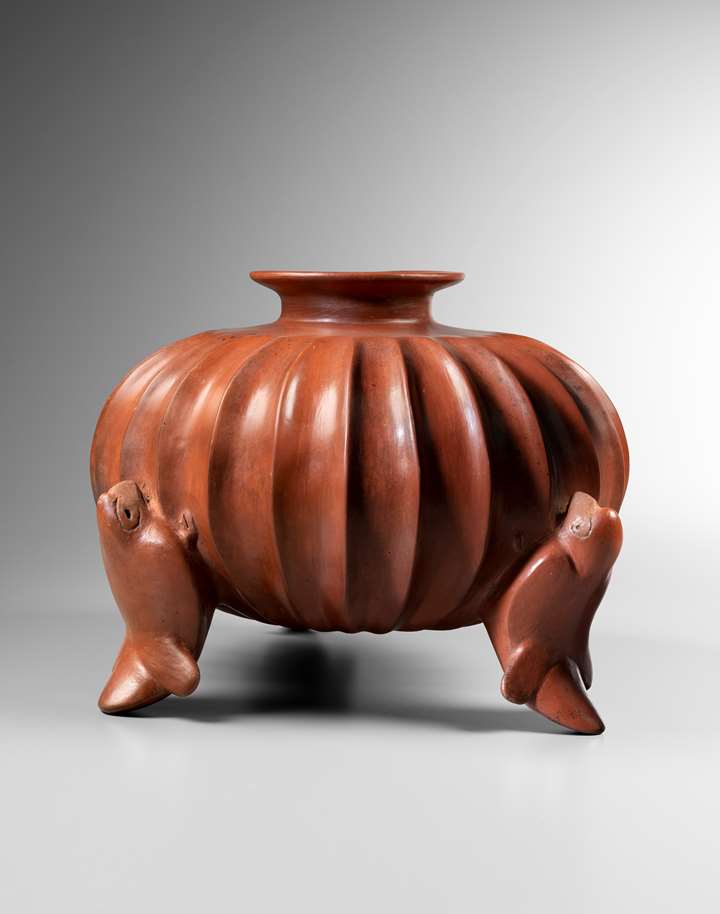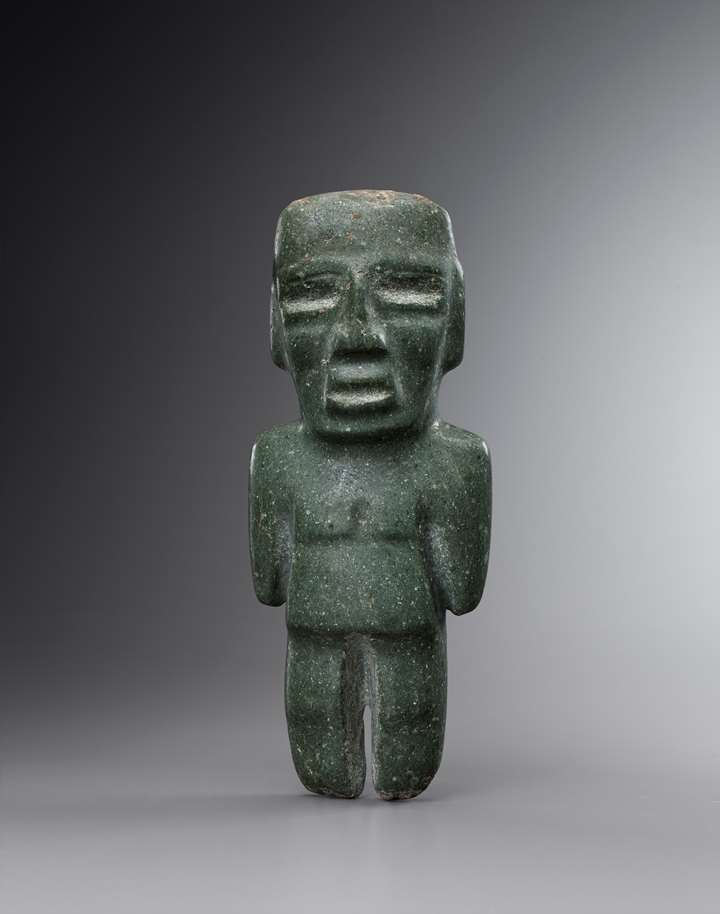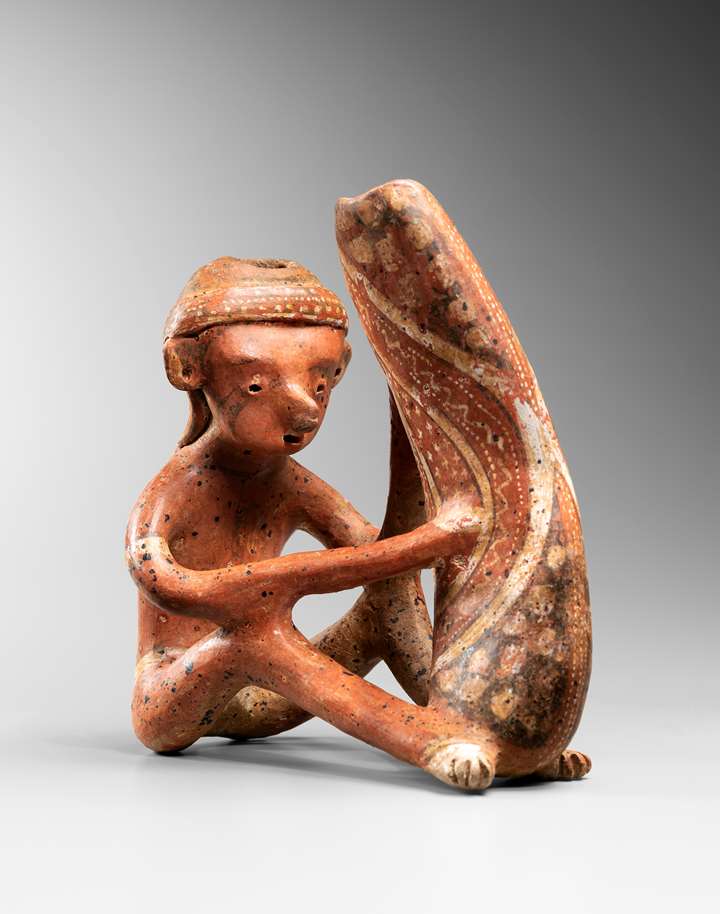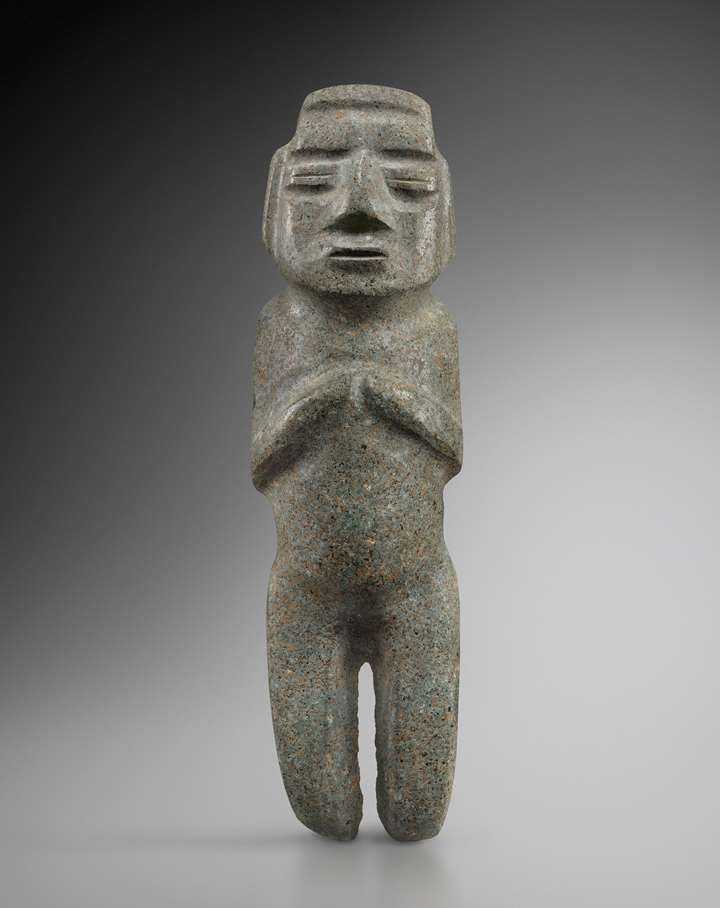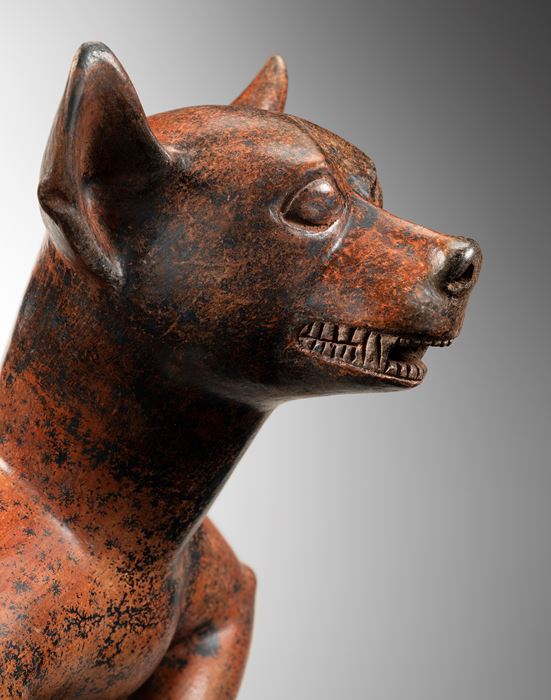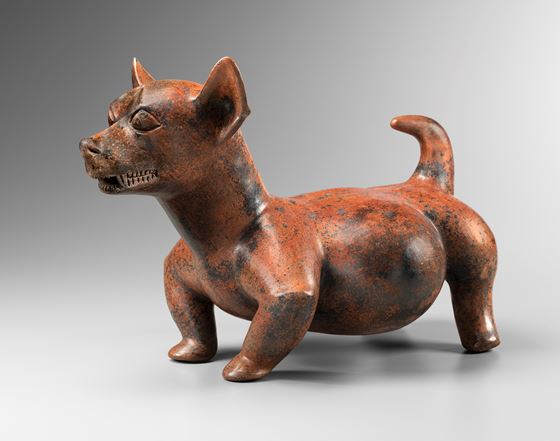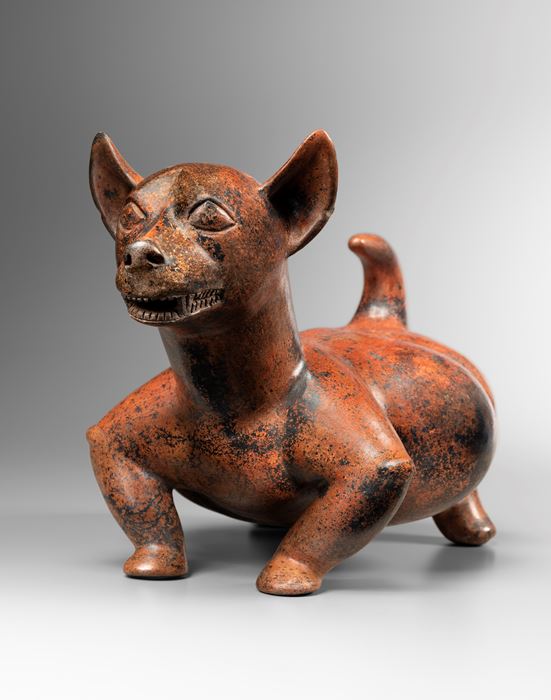Description & Technical information
Fattened Dog - COLIMA - Mexico - 100 BC. - 250 AD. - Pre-Columbian
Height : 27,1 cm
Length : 40 cm
Width : 24,3 cm
Red terracotta with important traces of manganese oxide.
Documents (originals) provided to the acquirer:
- Certificate of authenticity of the Galerie Mermoz,
Santo Micali, Expert, (CNE) Compagnie Nationale des Experts
- Certificate of Art Loss Register
- Passport of free circulation
- Thermoluminescence report
- Invoice
This sculpture is undoubtedly one of the most beautiful representations of a Colima dog. Its generous forms, its superb glossy patina, its intense red-coffee slip, its excellent state of conservation and the life that the ceramist knew how to breathe into it, makes it an admirable work, from an aesthetic, technical and symbolic point of view.
The "hairless dogs" are typical of Mexico and are among the privileged subjects of the Colima artists who immortalized them in many ways. The care taken in their representation attests to the importance of these animals in the eyes of the peoples of Mesoamerica, who occupied a central place in their mythology.
Among the rare domesticated species, this type of dog, with very ancient roots, shared the daily life of pre-Hispanic men. On a symbolic level, it was perceived as the auxiliary of the god Xolotl, god of death, whose name also means "twin" in Nahuatl. He acted as a soul ferryman and his function was to accompany the deceased in the grave, to guide and protect them in their perilous journey to the afterlife.
Xolotl gave its name to the breed that still exists, Xoloitzcuintle, which combines the name of the god and the common name for "dog " in Nahuatl, itzcuintli.
This canine species was also fattened and its meat, considered a delicacy, was consumed during ritual ceremonies. By extension, we can consider that the ceramic representations, found in a funerary context, served as a scout but also as a " nutritional" resource for the deceased man. This explains the emphasis placed on its round and generous belly.
Date: 100 BC. - 250 AD.
Dimensions: 27.1 x 40 x 24.3 cm (10⁵/₈ x 15³/₄ x 9⁵/₈ inches)
Categories: Sculpture

Discover the gallery
Galerie Mermoz
Pre-Columbian Mesoamerican and South American

